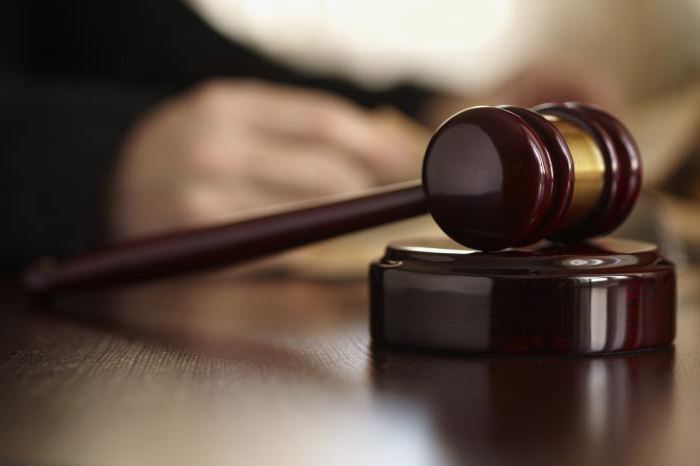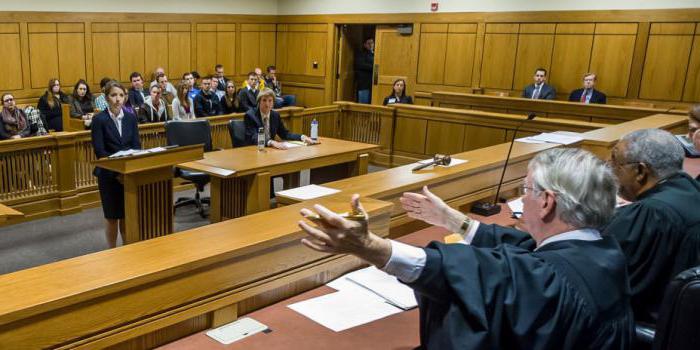Today, statute of limitations should be understood as the period for protecting the right relating to the claim of a person whose right is violated. It will be advisable to consider in more detail the concept and types of limitation periods, as well as analyze their characteristic features.

The concept of limitation
A legal entity or an individual whose rights have been violated in any way have the opportunity to file lawsuits (claims) regarding their defense with the judicial authorities or the arbitral tribunal in accordance with Article 11 of the first part of the current Civil Code. It is important to know that the presented option of protecting the right that is considered violated is limited by a certain period called the statute of limitations (Civil Code of the Russian Federation). So, in the considered branch of law, the period of limitation assumes a specific period of time established by Russian legislation to protect rights related to violated ones.
Expiration
What to do if the statute of limitations has expired? It is important to know that after the time period presented, the person concerned completely loses the opportunity associated with the requirement in the judicial authorities or arbitration court to enforce the protection of the right that has been violated. In other words, it is considered to be deprived of the right to action regarding the material meaning of this expression. It must be added that, in one way or another, a person reserves the right that applies to suing at any time, even if all types of limitation periods are missed. By the way, the circumstances presented are referred to as the right to action in a procedural manner.
For this reason, arbitration or judicial authorities undertake to consider the requirement to protect the violated right, regardless of how the limitation period is calculated, in accordance with article 199 of part one of the current civil law. Nevertheless, it should be remembered that the limitation of the statement of claim is used by the judicial authorities or arbitration tribunals solely upon the application of the party in a dispute. The question regarding whether the claim is subject to compulsory protection is decided upon in fact. The above rule, one way or another, makes it possible to determine the actual reasons and circumstances for missing the time period of the limitation period. It is important to note that if there are legal grounds, the violated right shall be protected by the judiciary.

The value of the terms
Currently, the relevance of all existing types of limitation periods pursues the goal of establishing discipline in relation to participants in legal relations of a civil plan. The presence of specific boundaries of a temporary nature for the implementation of the violated right in any case stimulates the resolution of actual disputes and the submission of claims in a timely manner.
It should be noted that the relationship between organizations involves the promotion of statute of limitation significant strengthening regarding payment discipline, as well as the absolute elimination of the receivable type of debt, because the exclusion of its collection within the time limits specified by law, one way or another, leads to losses.It is important to note that the need for timely submission of requirements regarding the elimination of legal violations, the proper fulfillment of existing obligations, obviously strengthens the contractual discipline, and also significantly enhances the effectiveness of the used sanctions of property nature.

Limitation
It is important to know that in accordance with some requirements specified in the current legislation (part one of Article 208 of the Civil Code), the statute of limitations does not apply. So, claims arising from the violation of personal non-property rights are not repaid by means of statute of limitations. An excellent example here is the right to a company, trademark, dignity and honor. The features of the rights presented completely exclude the restriction of their protection by the existing types of limitation periods. However, in certain cases, the law provides for the limits of the protection of personal non-property rights.
It is important to know that the statute of limitations cannot be applied also to the requirements of depositors regarding the issue of deposits that were made to savings banks, commercial structures, as well as institutions of the State Bank of the Russian Federation. One way or another, the fact presented is in accordance with the interests of both the state and investors.
The list of requirements provided for in Article 208 of the Civil Code, in accordance with which the limitation period (Civil Code of the Russian Federation) does not apply, is not exhaustive. So, the current legislation may establish other cases of exclusion of its use. For example, the appeal of victims or dependents to the administration of a structure regarding the payment of monetary amounts as compensation for damage upon the death of a breadwinner is not limited by any period.
Distinctive features of terms
The existing types of limitation periods should be able to be distinguished from other periods that are provided for by applicable civil law, especially claims. It is important to add that the latter include deadlines established by law in order to be able to resolve the actual dispute through the efforts of participants in civil matters, that is, before applying for help to protect a right that has been violated, to the judiciary or the arbitration court. It is interesting that the term presented, one way or another, is included in the period of limitation.
The limitation periods must also be distinguished from the acquiring limitation period, which is considered to be the period in accordance with the expiration of which the one who is not the owner is vested with the right of ownership to certain property complexes. For example, according to Art. 200 of the Civil Code of the Russian Federation, an individual or legal entity that is not considered the owner of the property, but in good faith, openly and continuously owns it as its own property for at least fifteen years or other property complexes for at least five years, is vested with the right to own this property. In subsequent chapters, it will be appropriate to move on to highlighting certain types of deadlines that are relevant to date.

Classification of dates
In accordance with Art. 195 of the Civil Code of the Russian Federation, the periods under consideration are classified into general and abbreviated, otherwise referred to as special. It would be advisable to analyze them in a more detailed manner. So, the duration of the first is currently set to 3 years. It is important to add that the general limitation period applies to all relevant requirements, in addition to those for which reduced time is provided for at the legislative level. You need to know that the latter are set for specific varieties of requirements specifically.From here, by the way, their second name settled.
Special limitation periods are set for disputes that arise in connection with the carriage of goods. This moment is specific. It should be added that in this case their duration is in absolute dependence on who the claim is made. So, if the presentation of claims comes from customers to carriers, then special limitation periods will be determined as two months; if on the contrary - six months.
You need to know that the reduced time, one way or another, is designed in order to simulate the quick and effective resolution of disputes relating to certain categories. As a rule, they arise between commercial associations in the process of executing business contracts.

How to prevent the passage of limitation?
In order to prevent the passage of the limitation period, it is necessary, of course, to know its duration. In addition, you need to be able to correctly identify the beginning of its course. So, in accordance with Art. 200 of the Civil Code of the Russian Federation, the course of the statute of limitations sets its starting point with the advent of the right to claim. For this reason, in practical terms, it is very important to establish the moment the right to claim arises. Regarding a separate kind of requirements, the question presented by means of direct methods is resolved in the legislation. Thus, in accordance with disputes arising from the supply of marketable products with inadequate quality characteristics, a right to claim arises. Consequently, the statute of limitations sets the starting point for its course on the day the buyer directly establishes certain shortcomings of the products delivered to him.
If the legislation does not contain such direct requirements, the initial moment of the term is the period identified by art. 195 of the Civil Code of the Russian Federation. In accordance with the general rule, the right to claim appears from the moment when the person became aware of information about a violation of his right. It is assumed that a citizen or legal entity has been notified of this from the moment the violation was committed. Then, when the information reaches the person a little later, the statute of limitations sets in on the day of notification.

Suspension
In accordance with the general rule, the limitation period is carried out in a continuous manner, and the person whose right is considered violated has the opportunity to apply for protection throughout the entire limitation period. However, the law takes into account that at times the plaintiff is deprived of the opportunity to file a claim on time due to circumstances beyond his control. In accordance with similar cases, today suspension is provided in respect of the statute of limitations.
So, the suspension of the statute of limitations means that after the occurrence of circumstances that are precisely defined by law, the statute of limitations stops for the period of their relevance. Under article 202 of the first part of the Civil Code, circumstances that prevent the request for protection of a violated right include the following points:
- An event of an emergency that cannot be prevented under specific conditions, which is defined as force majeure. It can be a flood, an earthquake, an epidemic, and so on.
- The delay in the plan of fulfillment of obligations established by the government of the Russian Federation. It is important to note that the suspension of the statute of limitations in view of the moratorium today is extremely rare.
- Stay of someone involved in the dispute as part of the Russian Armed Forces.
Statute of limitations
The meaning of the interruption of limitation is that in specific cases established by applicable law, the time period elapsed before the interruption is not taken into account, and the prescriptive limitation again sets the stage for its own course. In other words, the limitation period has the property of being restored in accordance with the full volume. Here (in contrast to the suspension of the limitation period), the time that has passed before the break is not taken into account in the process of calculating the new term (article 203, part one of the Civil Code).

Restoration of limitation
It is important to note that from the interruption and suspension of the statute of limitations, which are fully considered in the previous chapters, it is necessary to distinguish its restoration. This procedure is applied by the judicial authorities, arbitration or arbitration court in order to fully protect the violated right in the event that there are valid reasons for missing the statute of limitations, which, however, are not grounds for interruption or suspension.
You should be aware that the law does not provide a list of good reasons for missing such a category as a statute of limitations. It is assumed that here we are talking about circumstances that make it impossible or somewhat difficult to contact the appropriate structures for the protection of the violated right in a timely manner. For example, among the good reasons for missing the deadline, the plaintiff’s illness can be noted when in reality it is an obstacle to the timely presentation of the claim. So, the issue of restoring the statute of limitations is resolved at a meeting of the judicial authorities or the arbitral tribunal, provided that the parties are summoned at the same time as the merits are examined.